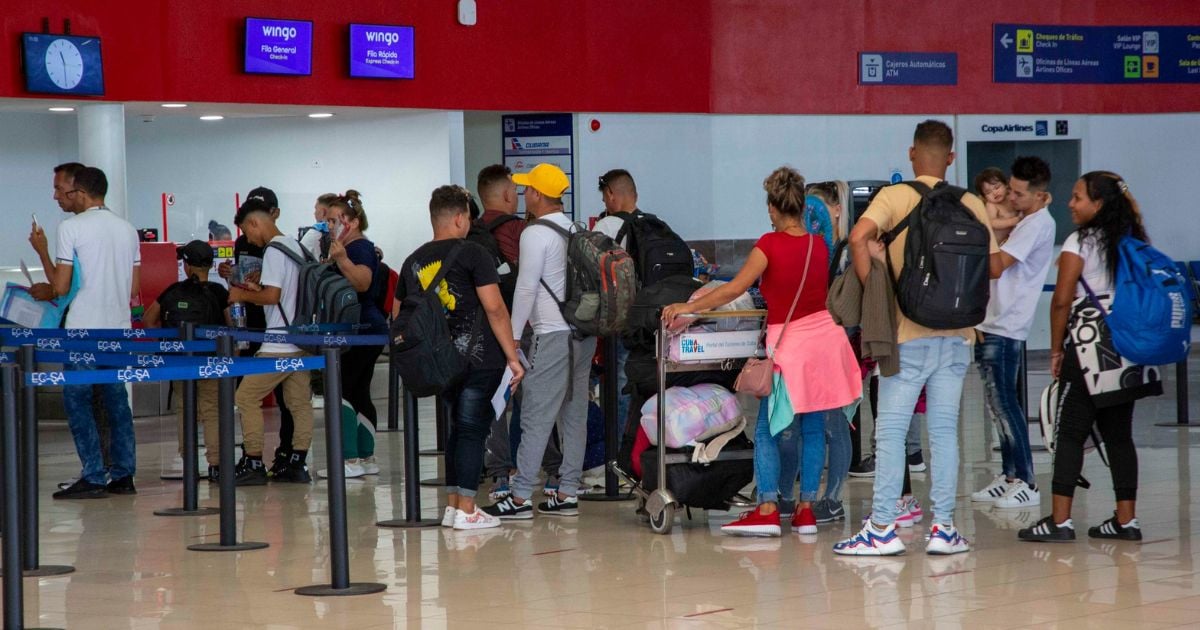The air conditioning system at Terminal 3 of the José Martí International Airport in Havana has shown progress following recent repairs, but the results are not consistent across all areas. Eduardo Rodríguez Dávila, the Minister of Transportation, announced on Facebook that while the central "chiller," which is crucial for maintaining a suitable climate, has been repaired and the main system is operating more stably, some zones remain without full thermal comfort.
The minister explained that since May, when the system's issues were addressed following numerous complaints, only eight out of ten alternative "rooftop" units have been installed to mitigate the main system's inefficient performance. Rodríguez proudly shared that these units have significantly improved conditions in high-traffic areas such as the final waiting rooms, immigration zones, and arrival areas. However, he acknowledged that critical sectors, such as the hallways leading to immigration and post-customs areas, still do not reach optimal temperatures for passenger comfort.
Challenges Persist Despite Improvements
This situation highlights that despite efforts to improve conditions, the solution remains partial and does not ensure a satisfactory experience throughout the terminal. CACSA, the Cuban Aviation Corporation, has committed to continue efforts to acquire higher-capacity equipment to bring Terminal 3's climate to its initial comfort standards, Rodríguez noted.
Nevertheless, until these actions are realized and the remaining units are installed, many passengers will continue to face thermal discomfort in this crucial terminal for arrivals and departures in the country. "The current situation is different; the common temperature at the airport has been gradually restored and should continue improving over the coming months," boasted the transportation minister.
Rodríguez also mentioned that new improvements are expected in the coming weeks with the terminal's expansion, potentially reducing the time spent in the most affected areas.
Several months after people expressed their frustration over high temperatures at Havana's airport, Irán Cueto Carmona, the general director, appeared in a video last July explaining that they are actively working to resolve the air conditioning issues at the facility.
The director indicated that the problems with Terminal 3's climate system stemmed from a breakdown without providing specific details. However, Cuba's main airport announced in July on its social media that they expected to resolve the air conditioning issue "within hours" following the installation of a new climate system.
"With the arrival of new material resources and the dedication of those who have tirelessly worked on this task, the José Martí International Airport continues to make positive strides in recovering the climate system of Terminal 3's lounges," read an optimistic post on Facebook.
Despite this partial resolution, the Minister of Transportation clarified that it was not the ultimate solution to the problem affecting passengers since last May but touted the implementation as "a significant step towards the restoration of Terminal 3's climate system and its subsequent modernization."
Understanding the Air Conditioning Issues at José Martí Airport
Here are some frequently asked questions and answers to help you better understand the situation regarding the air conditioning issues at Terminal 3 of José Martí International Airport.
What caused the air conditioning issues at Terminal 3?
The issues originated from a breakdown in the central "chiller" system, which is crucial for maintaining a suitable climate in the terminal.
What has been done to resolve the air conditioning problems?
Repairs have been made to the central chiller, and eight out of ten rooftop units have been installed to improve conditions in high-traffic areas.
Are all areas of Terminal 3 now comfortable?
No, some critical areas, such as the hallways leading to immigration and post-customs areas, still do not reach optimal temperatures for passenger comfort.
What future actions are planned to improve the air conditioning system?
CACSA has committed to acquiring higher-capacity equipment and completing the installation of the remaining units to bring Terminal 3's climate to its initial comfort standards.
